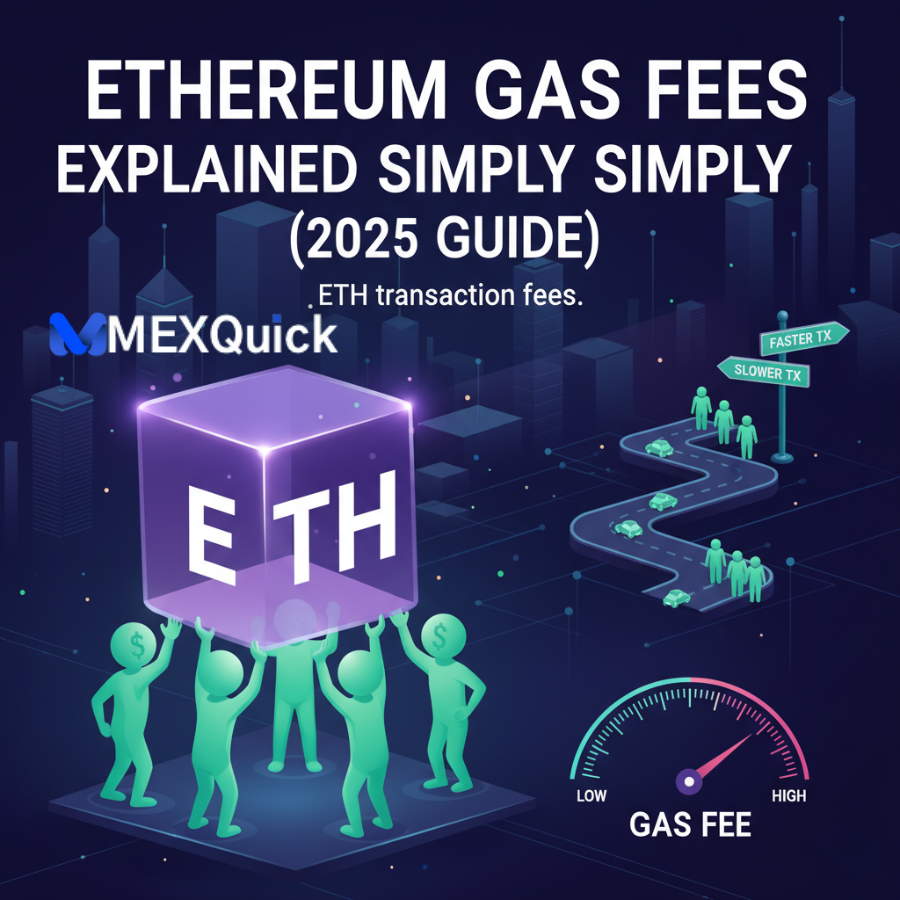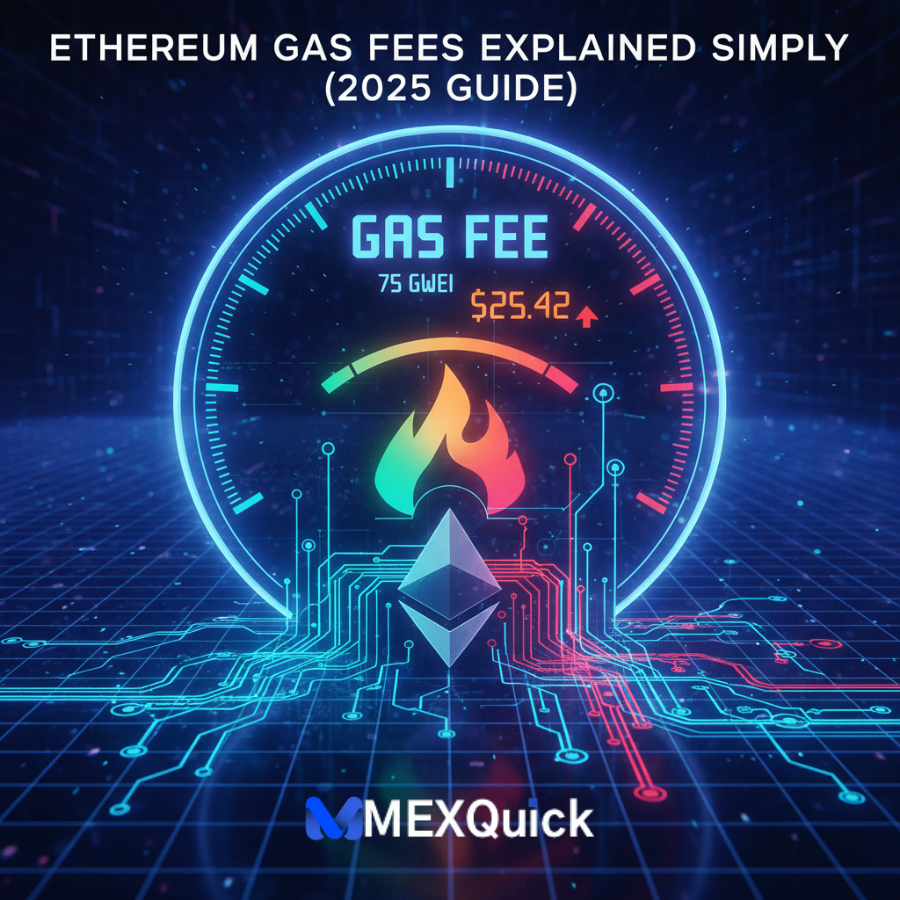
You’ve finally decided to dive in. Maybe you want to buy an NFT, provide liquidity to a DeFi pool, or simply send some ETH to a friend. You connect your wallet, hit confirm, and then… you see it. The gas fee. A $50 charge for a $20 transaction. Your heart sinks.
Sound familiar? You’re not alone. For millions, Ethereum gas fees explained feels like trying to read a foreign language. But here’s the secret: they aren’t as complicated as they seem.
In this guide, I’m going to demystify Ethereum gas fees for you. No confusing jargon, just plain English. By the end, you’ll not only understand what you’re paying for but also discover actionable strategies to save real money on your ETH transaction fees in 2025. Let’s turn that confusion into confidence.
What Are Ethereum Gas Fees, Really? (The Simple Analogy)
Think of the Ethereum network as a global, decentralized highway. Everyone is trying to get their transaction (their “car”) from point A to point B.
Gas is the Fuel, Not the Car
In this analogy:
- The Highway: The Ethereum blockchain.
- Your Transaction: The car you’re driving (e.g., sending ETH, swapping tokens).
- Gas: The fuel your car needs to complete the trip. You have to pay for this fuel.
- Gas Price: The cost per liter (or gallon) of that fuel. When the highway is congested (network busy), the price of fuel goes up.
- Gas Limit: The maximum amount of fuel you’re willing to use for the trip. A complex transaction (like interacting with a DeFi protocol) is a bigger car that needs more fuel.
The total ETH transaction fee you pay is simple: Gas Used (Units) x Gas Price (Gwei per Unit).
Gwei is just a denomination of ETH, like cents are to a dollar. 1 Gwei = 0.000000001 ETH.
Why Are Gas Fees So High? The Core Culprits
It all boils down to supply and demand. The Ethereum block space is a limited resource.
H3: 1. Network Congestion
Every single transaction is competing for a limited amount of space in the next block. When an exciting new NFT project mints or there’s a frenzy in DeFi, thousands of people are all submitting transactions at once. To get included, they “outbid” each other by offering a higher gas price. It’s an auction, and you’re the bidder.
H3: 2. Transaction Complexity
A simple ETH transfer is like a compact car—it’s efficient. But more complex actions are like semi-trucks. They take up more space.
- Simple/Low Gas: Sending ETH from one wallet to another.
- Complex/High Gas: Minting an NFT, making a complex trade on Uniswap, or providing liquidity on Aave.
The Game-Changer: How “The Merge” and EIP-1559 Changed Everything
You might have heard about “The Merge.” Did it lower gas fees? Not directly. But it set the stage for a fundamentally better system and introduced a crucial fee mechanism.
H3: EIP-1559: The Burn Mechanism
This upgrade, which went live in 2021, made fee prediction much easier. Now, every fee has two parts:
- Base Fee: A set, algorithmically determined cost that you MUST pay to get your transaction into a block. This base fee is burned (destroyed), permanently removing ETH from circulation—a deflationary force.
- Priority Fee (Tip): An optional tip you can add to incentivize validators to prioritize your transaction over others.
This is why you’ll now see charts showing “ETH burned.” The network is literally burning billions of dollars in ETH, making the remaining ETH more scarce.
Actionable Tips: How to Save Money on Gas Fees in 2025

This is where you save money. You don’t have to be a victim of high fees.
1. Time Your Transactions Wisely
The network has peak and off-peak hours, just like a traffic system. Based on historical data:
- Peak Hours (High Fees): Typically during business hours in the Eastern US (EST/EDT) and when major US markets are open. Also during major NFT mints or airdrops.
- Off-Peak Hours (Low Fees): Evenings in the US and weekends (specifically late Sunday night in the US). Use tools like Etherscan’s Gas Tracker or CoinGecko’s Gas Widget to check real-time prices before you transact.
2. Use Layer 2 Scaling Solutions (Your Best Bet)
Think of Layer 2s (L2s) as high-speed trains that run alongside the main Ethereum highway. They handle transactions off-chain and then post a summary back to the mainnet, slashing costs by 10x to 100x.
- Popular L2s to Use Now: Arbitrum, Optimism, Polygon PoS, Base.
- How to Start: Most major wallets (like MetaMask) and exchanges (like Coinbase) make it easy to bridge your assets to these networks. You’ll do all your trading and NFT buying there for a fraction of the cost.
3. Adjust Gas Settings Manually
Don’t just accept your wallet’s default “medium” priority setting.
- For Non-Urgent Transactions: When you submit a transaction, your wallet often lets you edit the gas price. Set a lower-than-suggested price. It might take longer to confirm (sometimes hours), but if you’re not in a rush, you can save 50% or more.
4. Leverage Gas Tokens and Fee Savings Tools
Keep an eye on emerging solutions designed specifically for ETH transaction fees reduction:
- Gas Tokens: While their use has declined post-London upgrade, some protocols still offer ways to “lock in” cheap gas for future use.
- Gasless Transactions: Projects like Biconomy enable “meta-transactions,” where the dApp you’re using pays the gas fee for you, abstracting the cost away entirely.
Conclusion: You Are Now in Control
Let’s recap the key takeaways. Ethereum gas fees explained simply are the necessary cost of using a secure, decentralized global computer. They are a product of demand and computational complexity. While “The Merge” didn’t lower fees, it created a more predictable fee market and a deflationary burn mechanism.
Your path to lower fees is clear:
- Understand the “why”—congestion and complexity drive costs.
- Embrace Layer 2s—this is the single most effective way to drastically reduce your costs today.
- Be strategic—transact during off-peak hours and don’t be afraid to manually adjust your gas settings.
The goal isn’t to eliminate gas fees—they are what secure the network. The goal is to become a smarter user who knows how to navigate the system efficiently.
I want to hear from you! What’s your biggest gas fee horror story? Or, which Layer 2 network are you most excited about using? Share your thoughts in the comments below—let’s learn from each other
